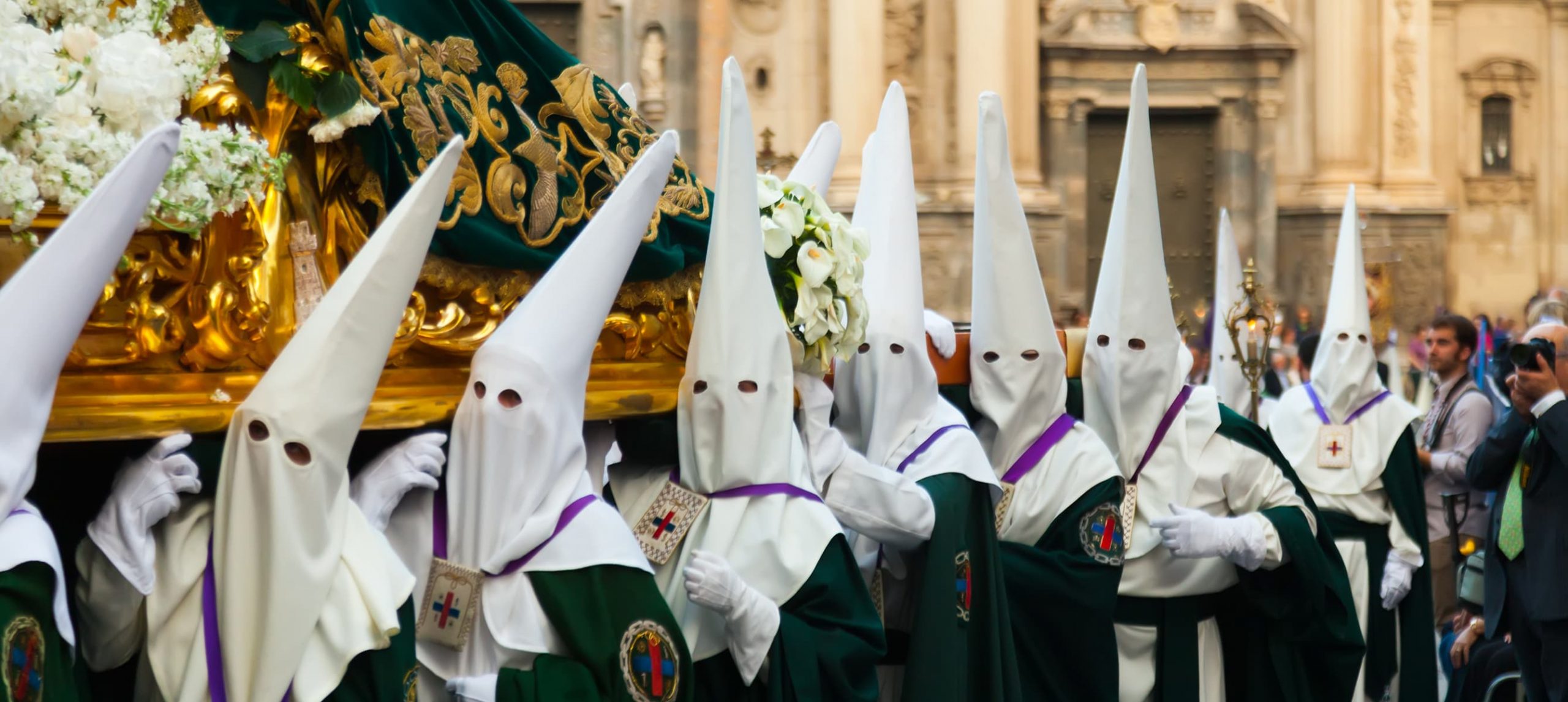|
Richard Jernigan -> RE: Advice sought for martillo technique (Aug. 5 2022 21:13:11)
|
quote:
ORIGINAL: Ricardo
I still get triggered by the images in Sevilla. Apparently a Klan leader adopted the Capirote to scare people. It is scary, I hate to say.
By age 18 I was no longer religious. I was raised in a strongly Christian milieu. To this day, at age 84, Christian rituals sometimes resonate emotionally, though it has been nearly seven decades since I saw religion as intellectually valid.
At Semana Santa in Sevilla I have been moved by the religious pageantry. The processions of the Virgen de la Macarena and the Dios del Gran Poder, with their saetas, their own slow pasodobles played by their marching bands, the drums and bugles and the magnificent images have at times captured my feelings.
The Penitentes at Sevilla in their capirotes don't scare me.
What have scared me have been some of the midnight torchlight processions of the Mystic Krew of Comus and Rex at Mardi Gras in New Orleans, fifty years ago.
For Comus the street lights and all other illumination were completely shut off, leaving the street and the crowded sidewalks in thick darkness. It stayed that way for quite a while. Then the distant glow of torchlight could be made out, dimly.
The procession slowly drew nearer. The members of the Krew stood along the sides of huge wooden wagons, the wheels six feet high. The wagons were concealed in a secret place all year except for the parade. A friend, whose uncle spent $20,000 per year on Mardi Gras, told me the wagons dated from the 19th century. When the procession was near enough, you could see that the wagons were drawn not by horses, mules or oxen, but by tall, heavily muscled, shirtless, sweating Black men, hauling on thick ropes, three men to a rope, four ropes to a wagon. They were accompanied by Black men carrying three foot torches, which cast a flickering yellow light and rippling shadows.
King Comus's costume was supported by a light framework making him appear 15 feet tall and six feet wide. His head and face were covered by the same fabric as his immense robe. Everyone else in the Krew wore the same eerily cheerful white plastic full-face mask. The shoulder-to-shoulder crowd of the Krew on the wagons looked like a cloned herd of pale emotionless aliens staring down at the crowd on the sidewalks
At length, Comus was followed by Rex, the last Krew, also anonymous and masked, also hauled on huge wagons drawn by Black men. All the Mardi Gras krews threw fake coins with their logos, cheap necklaces and other souvenirs to the crowd, who shouted "Hey Mister, Hey Mister!" Though Rex were anonymous, the King was always a well known celebrity. Every few blocks King Rex threw a 20-dollar gold piece into the street, followed by surges of pandemonium and fights.
Both were secret societies, as were many of the other Mardi Gras krews. When the City Council passed an ordinance forbidding any organization to parade unless they published their membership, intended as a blow against racism, Comus refused to identify its members and stopped parading. I suppose they continued to participate in the invitation-only Midnight Ball with Rex, after the parade.
The two weeks leading up to Ash Wednesday in New Orleans were unlike anything else I have experienced, including Carnaval in Rio de Janeiro.
The floats at the Sambodrome in Rio are far larger and more elaborate than the traditional ones at New Orleans. The intricately choreographed and costumed massed dances of Rio's samba schools are more impressive than New Orleans's many 200-member high school bands with rows of sexy teenaged majorettes stepping out in style. The spirit of Carnaval is more frantic, drunken and openly sexual than the laid back laissez le bon temps rouler of New Orleans.
But nothing at Rio paralleled the menacingly racist coda of the two aristocratic krews on the night of Mardi Gras in New Orleans.
That was scary.
RNJ
|
|
|
|

